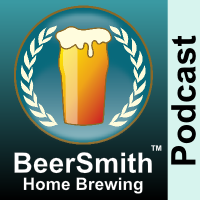 This week we discuss how to keg your home brewed beer with Chris Graham from MoreBeer. I highly recommend watching the video as this week Chris provides a detailed overview on kegging equipment, kegging techniques and how to make the transition from bottles to kegs!
This week we discuss how to keg your home brewed beer with Chris Graham from MoreBeer. I highly recommend watching the video as this week Chris provides a detailed overview on kegging equipment, kegging techniques and how to make the transition from bottles to kegs!
Download the MP3 File – Right Click and Save As to download this mp3 file
[audio:http://traffic.libsyn.com/beersmith/BSHB-79-Kegging-Graham.mp3]
Topics in This Week’s Episode (55:25)
- I highly recommend watching the video version of the podcast this week – Chris shows us all of the equipment needed for kegging and how to use it.
- This week my guest is Chris Graham, who is Chief Operating Officer of MoreBeer, one of the largest home brewing supply shops. Chris is also active in the home brewing community – he is a member of the American Homebrewers Association Governing Committee and Brewer’s Association board of Directors. He has been on the show twice before.
- Chris provided a PDF guide on kegging which can be downloaded here. Also MoreBeer has an online page about kegging.
- We discuss some of the advantages of kegging beer over bottling it.
- Chris provides an overview of the equipment needed for kegging and approximate costs.
- We talk about the CO2 tank, regulator and where to get your tank filled.
- Chris discusses the kegs themselves and the difference between pin lock and ball lock kegs.
- He tells us why having a refrigerator is important for kegging your beer
- We talk about faucets, taps and what the different type of faucets are – as well as which work best for home brewing.
- Chris explains why your keg line length is important
- He tells us how to keg your beer – walking us through the basic process.
- We talk about portability options including bottling directly from a keg and using a Growler.
- Chris provides some closing thoughts on what’s new at MoreBeer
Thanks to Chris Graham for appearing on the show and also to you for listening!
iTunes Announcements: I launched a new video channel for the BeerSmith podcast on iTunes, so subscribe now! At the moment it will only feature the new widescreen episodes (#75 and up). Older episodes are available on my revamped Youtube channel. Also all 76 audio episodes are on iTunes now – so grab the older episodes if you missed any.
Thoughts on the Podcast?
Leave me a comment below or visit our discussion forum to leave a comment in the podcast section there.
Subscribe to the Podcast on iTunes or BeerSmith Radio
You can listen to all of my podcast episodes streaming live around the clock on our BeerSmith Radio online radio station! You can also subscribe to the audio or video using the iTunes links below, or the feed address
- Audio feed on iTunes –
 (direct: http://beersmith.com/content/feed/podcast )
(direct: http://beersmith.com/content/feed/podcast ) - Video feed on iTunes –
 (direct: http://beersmith.com/tv/category/podcast/feed/ )
(direct: http://beersmith.com/tv/category/podcast/feed/ )
And finally, don’t forget to subscribe to the blog and my newsletter (or use the links in the sidebar) – to get free weekly articles on home brewing.
Thanks. Even our local homebrew club assumes that everyone (except me) knows all there is to kegging. I have only been brewing for 5 years, but this simple explanation with the visual aids was better than a manual.
Michael
This has to be one of the best and most indepth coverages of kegging I have ever seen. Ive been kegging for quite a while and still picked up a few new things from it. Thanks again.
Enjoyed the podcast and the additional resources on the website. Regarding the pressure for carbonation, it is important to realize that the numbers in the chart are based on carbonating beer at sea level. You will need to increase the pressure by 1/2 psig for every 1000 feet of altitude for your beer to reach the volume target shown in the chart.
This changes how I keg and serve since I brew and keg at 10,000 feet in the mountains of Colorado. First, I add 5 psig to the pressure shown in the chart to reach the desired volume of CO2 in my beer. Second, I extended the tubing in my delivery system to account for the higher pressure in the keg.
Brad and Chris, thanks again and keep up the good work!